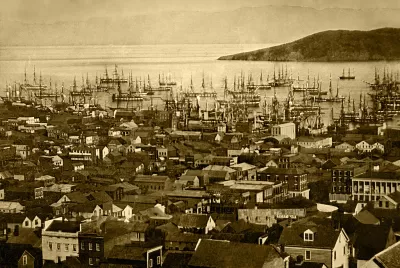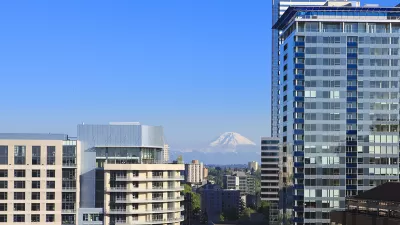The latest Upshot by Emily Badger looks at why American cities with the greatest economic opportunity no longer attract the population increases of yore

North Dakota was the exception. Riding an oil boom earlier this decade, some counties in North Dakota correspondingly had significant population and household growth. Otherwise, since 2000, metro areas in the United States with the most prosperity don't have the most growth.
In the latest Upshot in the New York Times, Emily Badger reports that, historically, boomtowns had correspondingly high growth rates. Chicago in the late 1800s, Detroit between 1910 and 1930, Los Angeles in the 1920s, and Houston after 1950 all experienced a swelling population as economic development took off.
Why is this? Many coastal cities, for example, have land use restrictions and actual land shortages that inhibit growth. One solution is to reduce the barriers to the creation of more housing in the most prosperous and expensive cities, which is both a political and economic challenge. Badger concludes that the federal government does not have the power to do this, but local cities and suburbs do.
FULL STORY: What Happened to the American Boomtown?

Planetizen Federal Action Tracker
A weekly monitor of how Trump’s orders and actions are impacting planners and planning in America.

Congressman Proposes Bill to Rename DC Metro “Trump Train”
The Make Autorail Great Again Act would withhold federal funding to the system until the Washington Metropolitan Area Transit Authority (WMATA), rebrands as the Washington Metropolitan Authority for Greater Access (WMAGA).

DARTSpace Platform Streamlines Dallas TOD Application Process
The Dallas transit agency hopes a shorter permitting timeline will boost transit-oriented development around rail stations.

Supreme Court Ruling in Pipeline Case Guts Federal Environmental Law
The decision limits the scope of a federal law that mandates extensive environmental impact reviews of energy, infrastructure, and transportation projects.

Texas State Bills to Defund Dallas Transit Die
DART would have seen a 30% service cut, $230M annual losses had the bills survived.

Bikeshare for the Win: Team Pedals to London Cricket Match, Beats Rivals Stuck in Traffic
While their opponents sat in gridlock, England's national cricket team hopped Lime bikes, riding to a 3-0 victory.
Urban Design for Planners 1: Software Tools
This six-course series explores essential urban design concepts using open source software and equips planners with the tools they need to participate fully in the urban design process.
Planning for Universal Design
Learn the tools for implementing Universal Design in planning regulations.
Roanoke Valley-Alleghany Regional Commission
City of Mt Shasta
City of Camden Redevelopment Agency
City of Astoria
Transportation Research & Education Center (TREC) at Portland State University
US High Speed Rail Association
City of Camden Redevelopment Agency
Municipality of Princeton (NJ)




























